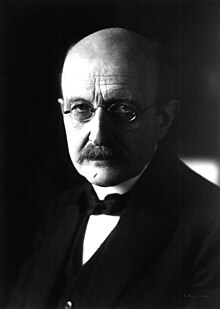Draft:Micro domain
| Submission declined on 23 August 2024 by Utopes (talk). This submission is not adequately supported by reliable sources. Reliable sources are required so that information can be verified. If you need help with referencing, please see Referencing for beginners and Citing sources. This draft's references do not show that the subject qualifies for a Wikipedia article. In summary, the draft needs multiple published sources that are:
Where to get help
How to improve a draft
You can also browse Wikipedia:Featured articles and Wikipedia:Good articles to find examples of Wikipedia's best writing on topics similar to your proposed article. Improving your odds of a speedy review To improve your odds of a faster review, tag your draft with relevant WikiProject tags using the button below. This will let reviewers know a new draft has been submitted in their area of interest. For instance, if you wrote about a female astronomer, you would want to add the Biography, Astronomy, and Women scientists tags. Editor resources
|  |
 Comment: Much of the article remains unsourced at this time. Utopes (talk / cont) 21:55, 23 August 2024 (UTC)
Comment: Much of the article remains unsourced at this time. Utopes (talk / cont) 21:55, 23 August 2024 (UTC)
In physics, the study of micro domains refers to the exploration and analysis of phenomena occurring at very small scales, often at the atomic or subatomic level. These micro domains encompass the realm of Quantum mechanics, where the classical laws of physics no longer apply, and new principles govern the behavior of particles and fields.
The Transition to the Micro Domain
[edit]While classical physics governs the macroscopic world, from falling apples to the orbit of planets, it starts to break down when dealing with very small particles like electrons or photons. This shift in behavior as we descend in scale signals the transition from the classical domain to the micro domain. Here, particles do not act as solid objects but rather as probabilistic entities described by wavefunctions.
To study this domain, physicists must use highly sophisticated equipment, such as electron microscopes, particle accelerators, and X-ray crystallography, all of which allow us to probe the structure of matter at the atomic level.
Historical Context and Development
[edit]The exploration of the micro domain began in the early 20th century with groundbreaking experiments that challenged the traditional Newtonian view of the universe. One of the most critical moments was Max Planck's work on blackbody radiation in 1900, which introduced the idea of quantized energy levels. This marked the beginning of quantum mechanics, a theory that governs the micro domain. Planck's law suggested that energy is not continuous but emitted in discrete packets called "quanta"[1]
Albert Einstein's explanation of the photoelectric effect further strengthened this idea by demonstrating that light, which had long been considered a wave, also exhibited particle-like properties. These findings laid the groundwork for the quantum revolution.
Quantum Mechanics: The Heart of the Micro Domain
[edit]At the core of the micro domain lies quantum mechanics, a branch of physics that describes the behavior of matter and energy on the smallest scales. Developed in the early 20th century by pioneers like Max Planck, Niels Bohr, Werner Heisenberg, and Erwin Schrödinger, quantum mechanics replaces the deterministic view of the universe with one ruled by probabilities and uncertainty.
Quantum Mechanics and Particle Physics
[edit]At the core of the micro domain lies quantum mechanics, which deals with the dynamics of elementary particles such as electrons, photons, and neutrinos. Quantum mechanics encompasses a variety of concepts that defy classical intuition, such as wave-particle duality, superposition, and entanglement.[2]

Applications of the Micro Domain
[edit]Understanding the micro domain has led to remarkable technological advancements:
- Semiconductors and Electronics: The discovery of quantum effects in semiconductors has led to the development of transistors, which are the building blocks of modern electronic devices, from smartphones to computers.
- Quantum Computing: Harnessing quantum superposition and entanglement, quantum computers aim to perform calculations far beyond the capabilities of classical computers, revolutionizing fields like cryptography, materials science, and artificial intelligence.
- Medical Applications: The study of atomic and molecular structures enables advancements in medical imaging, such as MRI and PET scans, as well as targeted radiation therapies for cancer treatment.
- Nanotechnology: By manipulating matter on the atomic and molecular scale, nanotechnology allows the creation of new materials and devices with applications in medicine, electronics, and energy storage.
References
[edit]- ^ "16.1: The Standard Model of Particle Physics". Physics LibreTexts. 2021-12-08. Retrieved 2024-08-23.
- ^ Hooft, Gerard 't (July 2007). "The making of the standard model". Nature. 448 (7151): 271–273. Bibcode:2007Natur.448..271H. doi:10.1038/nature06074. ISSN 1476-4687. PMID 17637655.
